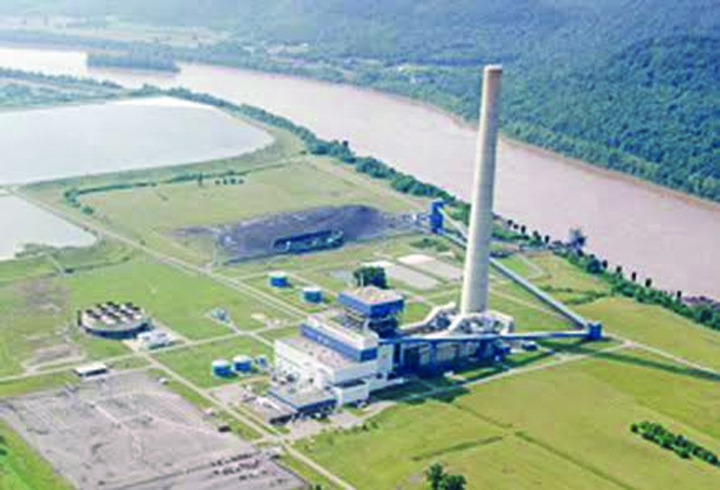
DP&L says Killen Plant will follow suit when the coal runs out –
By Patricia Beech –
The towering smoke stacks of the J.M. Stuart Power Plant have dominated the Ohio River skyline in southern Adams County for nearly 50 years.
But Thursday morning as the sun rose over the Ohio Valley, the billowing pillars of white smoke that spew from the stacks had turned to wispy tentacles that quickly faded into the morning fog, signaling the end of an era for Adams County.
According to sources at the plant, the last of the coal supply was fed into the 2,318-megawatt facility at 3:19 a.m., bringing four decades of power generation and local job security, to an end.
The plant, which began operation in 1970, employed nearly 400 people and had a total of $60 million in annual payroll.
Now, only a skeleton crew remains to sell off equipment and prepare the facility for permanent retirement.
Meanwhile, a few miles to the east, the Killen Power Plant will continue to generate power until its coal reserves are completely depleted.
While rumors in recent months suggested that “interested buyers” were trying to negotiate a deal to purchase the Killen plant, a DP&L spokesperson said the rumors were “grounded in pure speculation”.
“I haven’t received any information to that effect,” Mary Ann Kable, Media Relations person for DP&L, told the Defender on Monday.

“The company is open to listening to possible buyers,” she said. “But there haven’t been any.”
AES purchased the J.M. Stuart Station and Killen Station from Duke Energy in 2014.
Killen is a single-unit, 618-megawatt plant in Wrightsville that began operations in 1982. Stuart was a four-unit, 2,318-megawatt plant in Aberdeen that began generating power in 1969.
In January 2017, six people were injured in a Unit 1 explosion at the Stuart facility. The plant had to be temporarily shut down while DP&L investigated and assessed the cause and damages. Even though the plant began a restart in February, Unit 1 was never brought back online.
Then, in March 2017, DP&L and its parent company AES announced their intention to close the two power plants as part of a settlement over its electricity security plan (ESP), which had been contested by several groups, including the Sierra Club, a powerful environmental agency. DP&L agreed to close the plants and shift its power focus toward renewable energy. Operations at Stuart were transferred from DP&L to AES Ohio Generation the following October.
In the months following, local residents have held out hope that the plants might sell, and some even appealed to the White House to intervene, but thus far, President Trump has given no sign that he intends to fulfill his campaign promise to save jobs in the nation’s coal-fired generation plants.




